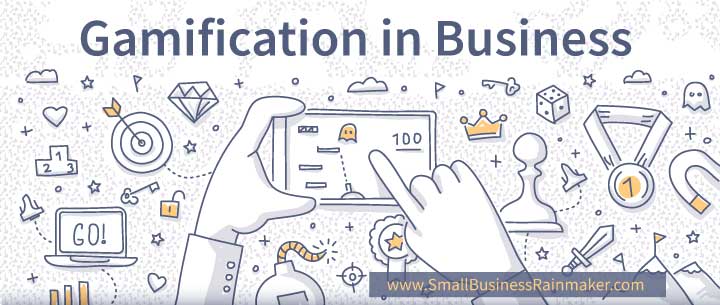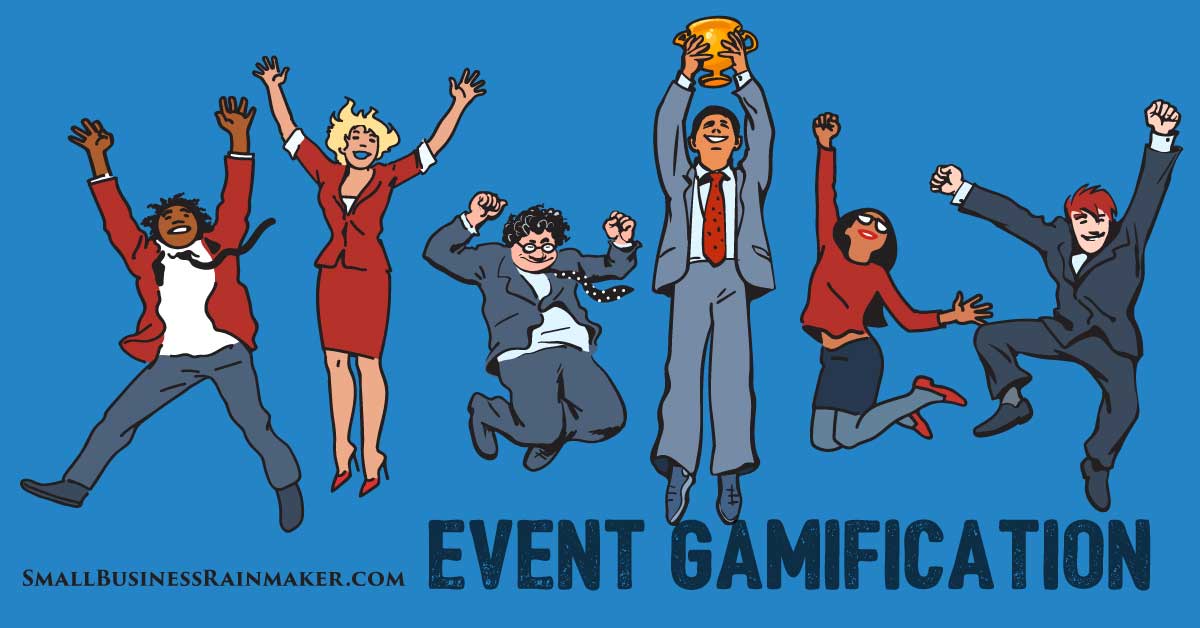
Employees playing games during work hours, while claiming it improves their job performance. It’s a hard concept to grasp, especially for small business owners concerned about productivity and profit.
But many learning and development professionals are praising the use of gamification in business, and the reasons why may surprise you.
From delivering employee training, to a more effective form of performance measurement, gamification has been proven to increase the engagement, retention, and productivity of employees.What is Gamification in Business and How Does it Work?
So, what is gamification?
It’s the integration of interactive game playing into everyday business tasks, such as through quizzes, multiple choice questions, or virtual role play.
80% of learners agreed that learning would be more productive if it were game-orientated. But despite the continual emphasis employers have on delivering effective employee training, according to HR Dive, only 12% of employees felt they actually applied their skills training to their jobs.
4 Reasons Why Gamification Benefits Small Business Owners
So here are just a few reasons why implementing gamification into the workplace can benefit the small business owner.
1. It Increases Employee Engagement
It is well-known that learning retention rates are much higher online, between 25-60% according to Forbes, in comparison to classroom learning at only 8-10%. The reason behind this is that online or eLearning engages all 3 learning types.
Gamification appeals to visual, auditory and kinaesthetic learners through its use of video, images and sound as well as its interactive aspect. Meaning not only will learners engage more, they will retain more.
It is this reason that makes gamification an effective form of personable learning, proving especially useful when training a diverse workforce, as it can be adapted to the needs of individual learners.
A key element of gamification is its competitive aspect. Learners will usually progress through the game in levels that increase in difficulty, with the opportunity to earn points or badges.
This simple and often overlooked aspect of gamification has proven extremely successful within competitive working environments, such as sales or customer service, where employee performance can be ranked and displayed on a leader board.
It is the combination of performance comparison amongst peers and the instant gratification gamification provides, in the form of rewards, feedback or incentives, which makes it effective at boosting employee motivation.
2. It’s a Form of Microlearning
Thanks to the surge in social media and online usage, modern day learners have much shorter attention spans. Gamification is a form of microlearning, which is the concept of breaking down employee training into smaller, more manageable chunks to increase retention rates.
In a world where education needs to be quick and to the point, the use of microlearning has proven to be incredibly successful at training millennial workforces in particular. Employers are moving away from providing long, intense forms of training through inductions, seminars and external training programs, in favour of much shorter, digital content which learners can access at a time most convenient to them.
The last thing any small business owner would want is discovering that their investment in a 4-hour training session was wasted on short attention spans. It’s a further reason why microlearning delivered through an online LMS (learning management system), which employees can access throughout their working day, creates a more flexible learning approach.
58% of employees claimed they would make better use of their company’s online learning tools if they were delivered through microlearning. Shorter presentations, video content, and games are all forms of EdTech which are rapidly increasing in popularity, especially amongst millennial workers, for their ability to be accessed on-demand.
Just-in-time-learning is a new approach to learning many employers are now seeing, in which employees are choosing to learn as they go, accessing learning materials only when the need to use them arises. Just-in-time-learning has further fuelled the demand for employers to deliver training through gamification.
3. It Generates a Higher ROI Than Conventional Learning
What all small business owners like to see. Gamification is a digital form of learning, which is time, cost, and resource-efficient in comparison to conventional ITL (instructor-led training). In relation to an employers’ ROI, gamification provides a much quicker training experience, which learners are finding much easier to retain over ITL.
Not only this, but gamification is often a more cost-effective option, requiring fewer resources. It can also be conducted on-the-job. Employers will no longer have to invest in sending employees on external training, when gamification allows more effective learning to be undertaken internally.
And the ROI isn’t just for employers. Employees are investing much less of their time for increased learning results and higher retention rates through gamification. As well as that, the training they receive through gamification is much more appropriate, practical, and actionable than other forms of training they may be receiving.
4. It Delivers Results
Gamification has seen extensive results within leadership, managerial, sales, customer service and technical training environments. This is predominantly due to its practicality within real-life working scenarios.
Virtual role-play and simulation games are extremely effective in increasing employee decision-making and problem-solving skills, while providing an appropriate context to the training. The realism of gamification allows employees to learn through trial and error, without negative consequence. This allows employees the freedom to try new things and develop a solutions-orientated mentality.
Simulations where an employee can choose from a range of different responses, which ultimately affect the outcome of the virtual situation, encourage self-learning, working under-pressure, and a more autonomous thinking style. The results are employees who are more comfortable in making decisions independently.
The analytical capabilities of gamification further allow employers to analyze and monitor employee knowledge and performance, which can prove invaluable in highlighting trends, gaps in knowledge and further training opportunities.
In a case study undertaken by Bunch Ball, which looked into the results of gamification in a call center environment, gamification was able to reduce the average call time while increasing customer satisfaction rates by 9%. Employees were more motivated by the gamification atmosphere, where rewards were given for increased call conversions and demonstration of a positive company culture.
It wasn’t just the element of extrinsic reward which encouraged motivation. Gamification also created a culture of knowledge sharing, mentoring and coaching, which also improved employee relations.
Conclusion
Gamification is a simple but effective way in which small business owners can create a more productive, innovative, and engaged workforce. From saving time and resources on expensive employee training programs, to creating a company culture which harnesses and encourages a peer-learning environment, gamification is a tool employers can’t afford to overlook.
 Our guest author Aneesa Marufu is a freelance writer and content marketing professional, with a wealth of experience in the Education sector.
Our guest author Aneesa Marufu is a freelance writer and content marketing professional, with a wealth of experience in the Education sector.
She specializes in writing around the topics of Business, Marketing and Ed-tech.
Aneesa can be reached on Twitter (@AneesaWriter).












Leave a comment